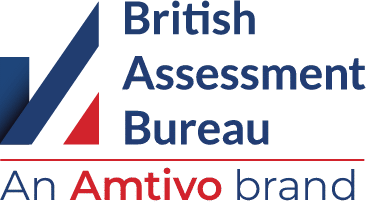Sickness has cost UK employers an additional £30 billion annually since 2018, with the majority of that cost stemming from lost productivity as employees continue to work while unwell, according to a 2024 report.
This ongoing challenge highlights the significant impact that employee health has on organisational performance and financial sustainability. Poor nutrition plays a substantial role in this crisis, with diet-related health conditions contributing significantly to workplace absence and reduced performance.
These findings raise an important question: how can organisations address the link between employee well-being and performance through practical, measurable steps?
The Impact of Nutrition on Employee Health
Globally, there is increasing recognition of the importance of good nutrition for both physical and mental health. Unhealthy diets and poor nutrition are among the top risk factors for various diseases, including heart attacks and stroke, certain cancers, and type 2 diabetes.
Cardiovascular disease
Cardiovascular disease remains one of the leading causes of death worldwide, with poor dietary habits being a major contributing factor.
Type 2 diabetes
Excessive consumption of sugar and processed foods can contribute to insulin resistance, a precursor to type 2 diabetes. This long-term condition affects millions globally and can significantly impact quality of life and productivity.
Cancer
Certain dietary patterns – such as high intake of red and processed meat, low intake of fruit and vegetables, and insufficient fibre – have been associated with increased cancer risk, including colorectal cancer.
Obesity
Obesity remains a major public health concern, with poor nutrition a significant contributing factor. Between 2023 to 2024, an estimated 64% of UK adults were considered overweight or obese – an upward trend since 2015. Rising obesity rates are also closely linked to reduced productivity.
The Cost of Poor Health on Productivity
The financial implications of poor health are increasingly difficult for organisations to overlook.
According to Vitality’s 2023 Britain’s Healthiest Workplace survey, UK workers on average lose 6.1 days to formal absences. Employees also lose around 44 days annually due to mental and physical health challenges.
While a proportion of organisational costs are a result of absence, a much larger share stems from reduced productivity when employees are present but not performing at their best. This form of lost productivity, known as presenteeism, far exceeds the direct cost of sick days.
Poor nutrition can directly contribute to presenteeism, with employees experiencing fatigue, brain fog, and mood fluctuations that prevent them from performing at their optimal level.
However, a review of studies about workplace nutrition programmes indicates that healthier diets improve workers’ concentration and energy, which can contribute to reduced absenteeism and potential cost savings for employers. Plus, improved nutrition enhances motivation, productivity, and work quality, potentially increasing sales and revenue.
Investing in Employee Health and Wellness
Investment in health and well-being could provide returns in several ways.
According to the 2025 McKinsey Health Institute, improving population health could contribute significantly to global productivity, with potential GDP gains estimated between 4% and 12%.
How ISO Certification Could Help
With productivity and organisational performance at stake, it is important for top management to participate in employee health initiatives. Implementing an ISO 45001-certified Occupational Health and Safety Management System can support a structured approach to managing OH&S risks. This may provide a structure to align wider health initiatives with occupational safety objectives where appropriate.
How ISO 45001 Could Support Employee Health
ISO 45001 is the international standard for Occupational Health and Safety Management Systems (OH&S). It sets out requirements with guidance to help organisations manage health and safety risks, as well as identify opportunities for improvement.
This may include addressing physical hazards, supporting mental health, and, where appropriate, implementing well-being initiatives as part of a comprehensive approach. Where relevant, organisations may choose to address workplace nutrition within a broader health promotion strategy, aligned with their OH&S objectives.
Organisations may choose to align voluntary health promotion activities (such as nutrition support or fitness programmes) with their OH&S Management System, where relevant and consistent with their risk context, including:
- Risk assessments: Regularly conducting assessments to identify and mitigate health and safety risks.
- Health promotion programmes: Introducing initiatives such as nutrition counselling, fitness programmes, and mental health support.
- Training and education: Providing ongoing training to employees on health risks and safe working practices. This could include nutrition workshops and healthy eating seminars.
- Worker engagement: Involving employees in health and safety decision-making processes to help promote engagement and compliance. This could include gathering feedback on workplace food options.
Achieve ISO 45001 Certification
Achieving certification to ISO 45001 can support improvements in employee health, may support regulatory compliance efforts, contribute to more effective risk management, and assist organisations in reducing exposure to potential health and safety risks.
Read our detailed guide to ISO 45001 to understand the standard and how it is applied, or explore the potential benefits of ISO 45001 certification in managing workplace health and safety.
Amtivo is UKAS-accredited in the UK. Our team works with organisations throughout the ISO 45001 certification process, from the initial application through to surveillance and recertification audits.
Request a free quote or contact our team today to start your ISO 45001 certification journey.


